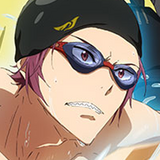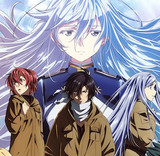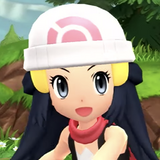#Bandai Battle Spirits Saga Card Game Influencer Box Review

Table of Contents
“Bandai Battle Spirits Saga Card Game Influencer Box Review”
Anime Trending had the opportunity to review the Battle Spirits Card Game Influencer Box from Bandai Namco. Battle Spirits Saga is a trading card game set to release in Spring 2023 that features spirits and magic in a world plunged into chaos. The original Battle Spirits was brought over stateside in 2009 but failed to have a long lifespan. Multiple anime series and video games inspired by the TCG have been released.
Battle Spirits Saga is described as a “brand new experience” based on the Battle Spirits TCG designed by Magic: The Gathering designer Mike Elliott, which was first released in Japan in 2008 and has had over 60 booster sets since. As an avid TCG player, I regularly attend MTG drafts and have played at some Cardfight!! Vanguard locals in my spare time, so I was intrigued by the chance to test out a new card game.
The main objective of Battle Spirits Saga is to bring your opponent’s life points down to zero by attacking your opponent directly with your own units, called spirits. Players take turns playing cards and activating abilities and aim to best their opponent with combat tricks and powerful spells. Gameplay follows a familiar turn order to other TCGs, with beginning, main, combat, and end phases. The game ends when one player has their life total reduced to zero or when a player tries to start their turn with no cards in their deck.
Battle Spirits Saga features three different card types: spirit cards, magic cards, and nexus cards, which all require the player to pay the cost to play them. Spirits are the primary way to win the game and interact with your opponent. They often have useful combat abilities. Magic cards, which function like spells and traps in Yu-Gi-Oh! or instants and sorceries in Magic: The Gathering, directly affect the battlefield — like a player drawing additional cards or boosting a spirit’s attack power — and are sent to the graveyard once resolved. Lastly, nexus cards are non-spirit cards that have abilities that impact the game in various ways, such as refreshing your spirits during your opponent’s turn or making your spirits unblockable. You can think of these like enchantments or artifacts in MTG that help the player gain a longer lasting advantage compared to the temporary boots granted by Magic cards.

Cores are the main resource of the game and are primarily used for playing cards and boosting the power of your spirits. Each player starts with four cores, and they can be represented by any small object. You gain one core at the start of each of your turns, and this resource is required to summon spirits, play nexus cards, and cast magic cards.
Spirits can also be leveled up by placing a core on that card, which will increase its level and unlock new abilities. On the flip side, any spirit with zero cores is destroyed, so you’ll always need to keep at least one core on each spirit. Cores used to summon new spirits or play nexus and magic cards will refresh at the beginning of your turn.
Core strategy is a, well, core strategy in Battle Spirits Saga. Since players need to use cores for every action they take and only get one additional core each turn, deciding how to distribute these finite resources becomes extra difficult. Saving up for a powerful 5-7 cost spirit sounds like a great plan, but that strategy doesn’t come without consequences — you might put yourself at an early disadvantage for only a potential future gain. So, do you place your early game cores in many low-cost spirits for an aggressive start but potentially lose out on precious cores? Or do you risk leaving yourself open to a series of early attacks in exchange for quicker access to more expensive spirits later in the game? This kind of strategic decision-making is a beloved trait in other TCGs, and Battle Spirits Saga offers a fun take on that design.
During the combat phase, the attacking player exhausts their spirits to try and reduce their opponent’s life total. However, similar to Magic: The Gathering, the defending player gets to decide which unit, if any, will block the attacking spirit. This allows the defender to choose if they would rather lose a life or let one of their spirits take the hit. So if your opponent has a particularly pesky spirit, you are unlikely to be able to remove it through combat.
Unlike MTG, attacks in Battle Spirits Saga are declared separately and one at a time. If your opponent has a huge boss monster, they can just keep blocking all your little spirits without losing any cost to them. Still, there are plenty of ways for the attacking player to gain an advantage. The “Awaken” ability lets an attacking spirit take cores from other spirits on your side of the field after blocking spirits are declared. This increases the level and power of your spirit and is a neat combat trick. Spirits with the “Curse” ability destroy any spirit that blocks it after a battle, which means you can trade your weaker spirits to take down your opponent’s more expensive spirits.
The box comes with two starter decks, a deck box, a bag of 30 cores, two playmats, a poster, and a special promo card.

Each starter deck normally retails for around US$15, which is typical for a TCG, and also comes with a bag of plastic beads to use as cores. The decks have 33 spirit, six nexus, and 11 magic cards to create a 50-card deck. There is also a paper how-to-play guide with an example field layout on the reverse side.
The cards themselves are pretty sturdy, with a weight and thickness similar to other Japanese TCGs, and fit into standard size card sleeves. Even unsleeved, they shuffle well and are very satisfying to flick — perfect for driving your opponents crazy! The game features a typical magical fantasy art style, with dragons, serpents, and angels. The foiling has layers, with some parts of the cards having a dull sheen while the rest of the art pops with a brighter shine, highlighting elements of the artwork when viewed at certain angles.

I really liked the playmats. Since this is a new game, having the turn order and outlines of the different game zones, like the core reserve area, trash, and deck area, printed on the mats meant I didn’t have to keep referencing the guide that came with the starter decks. The neoprene material made exhausting and refreshing cards a smooth experience, both in terms of speed and feel.

The deckbox is also high quality. It has a magnetic clasp that can withstand a moderate amount of jostling. It won’t endure a hard shake, but it’s sturdy enough to prevent all your cards from spilling out all over the place if you knock the box off the table. I appreciate the inclusion of the drawer at the bottom, which serves as a convenient place to store the cores.
The promo card was a special foil version of the card “Absolute Ice Shield,” which has a powerful ability that can restore a life point when you are attacked and can even end the battle phase to prevent you from getting attacked again that turn. It also has “For Influencer” hot-stamped on the card for that extra fancy feeling.
While I’ve only had the chance to play with two of the four available starter decks, the identities and playstyles of the different realms are distinct. The red Realm of Flame deck has powerful dragons and spirits that reward attacking by letting you shift cores around during combat to boost a unit’s level and power. Meanwhile, the purple Realm of Gloom deck is more control-focused, removing cores from enemy spirits to weaken them. Both of these playstyles have their own way to balance the combat advantage that the game gives the defending player. That being said, as someone who prefers control-style decks in other card games, I much preferred the Realm of Gloom. I feel like an evil mastermind when I get to interfere with my opponents’ spirits to give myself a combat advantage, and I love the satisfaction from destroying a spirit outside of combat by removing its last core.
Overall, I enjoyed trying out Battle Spirits Saga. The game is easy to pick up but shows signs of a complex game that requires plenty of decision-making. I’m looking forward to seeing how the game develops as more booster sets are released. If you’re interested in trying the game out for yourself, Bandai is hosting a series of launch events around the world where you can buy products — including starter decks, $5 booster packs, and $10 core sets — and compete for cash prizes! You can find out event information here.
If you liked the article, do not forget to share it with your friends. Follow us on Google News too, click on the star and choose us from your favorites.
For forums sites go to Forum.BuradaBiliyorum.Com
If you want to read more anime-manga articles, you can visit our anime-manga category.



